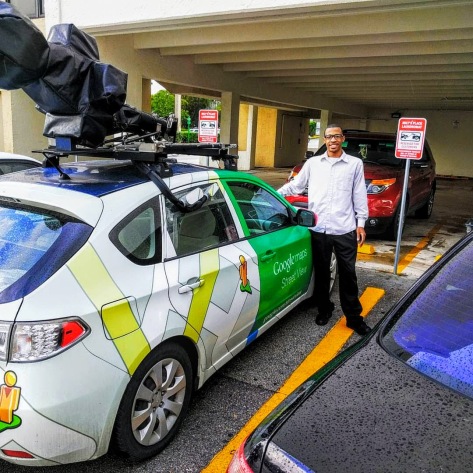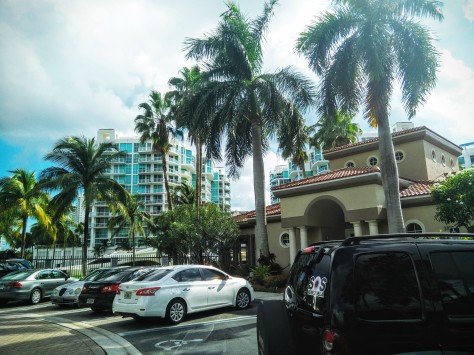A great part of Acqua is uniting the passions of our lives together and to showcase the talents via technology. These are a all 4K photographs taken by @AcquaNINJA of Miami. There will be many more of these segments in the upcoming days, enjoy!











A great part of Acqua is uniting the passions of our lives together and to showcase the talents via technology. These are a all 4K photographs taken by @AcquaNINJA of Miami. There will be many more of these segments in the upcoming days, enjoy!











AcquaNINJA is a 24 year old developer, currently residing in Miami, Florida. He is best known for his mobile development, as well as his passion for technology and science. He is also known for his expertise in the mobile ecosystem, as well as being a part of the Google and Android Development Team. He is currently partnered with Google via their online platforms. This has enabled him to create and develop new innovations for iOS and Android. He has also repeatedly shown his determination in the University environment as he has faced and conquered challenges, successfully completed courses, as well as hold employment outside of school simultaneously. AcquaNINJA plays guitar and makes timelapse videos in between developing in his spare time. Discipline motivates him and permits him to maximize his potential and release the ninja from within.
Connections
AcquaNINJA: https://plus.google.com/+AcquaNINJA
StreamTip: https://streamtip.com/t/AcquaNINJA
Twitter: http://www.twitter.com/AcquaNINJA
Instagram: http://www.instagram.com/AcquaNINJA
Twitch: http://www.twitch.com/AcquaNINJA
Website: http://www.AcquaNINJA.wordpress.com
Company Site: http://www.AcquaCompany.wordpress.com
AcquaNINJA, the Google Local Guide of Miami shows the path of being a great guide. The essentials are you get points for every review and one for every two photos of places. There are a few other ways which you can see on Google’s official guide website at https://www.google.com/local/guides/ and sign up.
Each review and photo you upload will be archived and you can see how many have seen or read them. Gold reviews are denoted by the icon of the place being inverted and typically this floats your review to the top which helps a lot for exposure. There are many things to love about Google Maps, try it for yourself and see where it takes you!
There are several ways to gain points, for each place you can gain up to (5) points. 1 point can be acquired for adding a new place, 1 point for editing an existing place, 1 point for snapping two photos, 1 point for reviewing the establishment, and the last point is for answering the Google questions for popular places. I hope that everyone is inspired to review places regardless if you are a Google local guide or not.
In Downtown Miami this panorama has done incredible stats. Boasting a 10,078px width this was an expertly stitched together via Google Photos. Professional quality photography made using HDR+ the shutter speed show to allow this shot to have light for this amazing shot. The compilation of photos can be found at https://goo.gl/photos/Z1YXfarkv3bGrkaLA
Motorola is opening its very first physical retail store later this week. Moto Shop, as it’s called, is opening in downtown Chicago, the company’s hometown, on Saturday, November 7, in time for holiday shopping to begin. In its blog post, the company notes that because smartphones and wearables have made powerful technology more personal, you should be able to go and experience them fully, in real life. Moto wants to make the shopping experience as personal as it can.
In advance of the grand opening, Motorola has shown off what you can expect to find in the first Moto Shop. Unlike a lot of gadget stores, this is all about the experience of the devices rather than their technical specifications and abilities. That means you’ll find a desk with all the materials available in Motorola’s Moto Maker tool, as well as an area for taking a professional picture with the Moto X Pure‘s camera. As well as those, you’ll also find a portion of hard tiled floor ready and waiting for you to drop (or spike) a DROID Turbo 2 on, showing off how durable the screen is.
In much of its styling and layout, it doesn’t really look like a tech store. Motorola describes it as an ‘experiential boutique’, and has built in ‘dedicated areas that bring to life’ its ‘marquee products and device features’. From the pictures, I’m not entirely sure I like it. I don’t know whether I’m looking at a jewelry store, hardware store or phone store when I see all the individual areas. It’s hard to see how all these segments fit together cohesively in to one store. Maybe they’re not supposed to.
The store is located at 108 N. State St (Suite 140 at Block 37), downtown Chicago and — as already mentioned — opens on Saturday, November 7th. There’s also going to be a grand opening celebration on November 14th. Regular opening hours will be 10am to 8pm Monday through Saturday and 11am to 6pm on Sundays. Now you can go have a look at all the beautiful Horween pebbled leather for yourself. As long as you’re a Chicagoan or in the neighborhood.
Source: http://9to5google.com/2015/11/04/motorola-store-opening-chicago/
Grid batteries are already coming out of the Gigafactory in Nevada.
Electric car maker Tesla Motors is already assembling batteries to be used by utilities and building owners at its huge battery factory, the Gigafactory, just outside of Reno, Nev. The company made the announcement during its third quarter earnings on Tuesday.
Earlier this year Tesla announced that it would start selling batteries that could be plugged into the power grid, connected to buildings, or paired with solar panels. Business owners and home owners can use Tesla’s batteries to lower electricity bills by powering buildings when grid electricity rates are high. Utilities can use the batteries to operate their grids more smoothly and to avoid building additional expensive and dirty power plants.
Tesla TSLA 11.17% said that it started assembling these batteries—called the Powerpack and Powerwall—at its factory in Fremont, Calif. in the third quarter of this year. In the early part of the fourth quarter, Tesla says it “relocated production from Fremont to an automated assembly line at the Gigafactory.” These Powerpack and Powerwall battery packs are likely using battery cells from its battery partner Panasonic.
Previously Tesla’s CEO Elon Musk had said that the company would move production of the grid batteries to the Gigafactory next year in the first quarter.
At the end of 2016, Tesla will make the Powerpack and Powerwall battery packs using battery cells that it produces at the Gigafactory, says Tesla
Overall, Tesla says it’s accelerating and expanding its plans to make the grid batteries. The company is seeing strong demand for the Powerpack and Powerwalls, in particular in Australia, Germany and South Africa.
Earlier this year Musk said the company had $1 billion-worth, or 100,000 in orders, for the grid batteries. As a result the grid batteries are sold out in 2016 already. Musk has also said that there’s been so much demand for Tesla’s grid batteries that they “went viral” and were “crazy off the hook.”
Previously Musk has estimated that just the grid battery orders could deliver between $40 million to $45 million in sales for the fourth quarter of this year. Sales for the battery business could be “ten times that number next year” — or presumably $400 million to $450 million in a quarter — after that.
Beyond next year, the business could reach “a few billion dollars in 2017,” Musk said earlier this year. “It’s sort of growing by a half order of magnitude to an order of magnitude per year.”
Tesla didn’t give any more details on the volumes of grid batteries it has been assembling at the Gigafactory on the earnings call. But Tesla CTO JB Straubel confirmed on the call that Tesla had just started assembly in the factory and said battery assembly will be done in a separate part of the building than where the battery cells will be manufactured.
Source: http://fortune.com/2015/11/03/tesla-grid-batteries-gigafactory/
In modern day flagships companies can only moderate and check so much internally before the product is released. Certain version(s) of the Nexus 6P with the model ‘MDB08K’ are prone to a glitch deemed the “AcquaNINJA Glitch” by Google Executives due to it being the first reported via AcquaNINJA. This glitch affects certain bands which will affect certain companies currently MetroPCS / T-Mobile are confirmed. This issue concerns where the Nexus 6P tethering/hotspot feature will seem to function properly, but when another device tries to connect it will show the infamous “!” on later versions of Android (i.e. lollipop, marshmallow) and the “∆” on iOS devices meaning the connection between the two is severed. Google is developing a patch for these variants soon and the fix is imminent. If you have a Nexus 6P with this model number just be patient in the upcoming weeks.
The bright black sand at Diamond Beach, Iceland, is dotted with smooth gray pebbles and glassy chunks of ice. The crash of foamy waves fills my ears as I turn my head to look up and down the beach and see the dark strip of sand fade into white fog as if it goes on forever. I don’t feel the cold, because I’m not really there. Moments earlier, I had been standing in a cable car climbing over Onomichi, Japan.
I’m in a windowless room at Google’s headquarters, holding a cardboard box against my face in a way that positions a smartphone two inches from my eyes. Google Cardboard, as both the phone holder and the accompanying app are called, transforms the computer in your pocket into a virtual-reality headset. It’s something of a gimmick. But it’s also a serious attempt to create a new mass communication and entertainment medium. “Virtual reality will have an important role to play in entertainment, communications, work, and learning,” says Clay Bavor, who leads Google’s virtual-reality project. “Cardboard will be the way that we make these immersive experiences available for everyone.”
Mark Zuckerberg, CEO of Facebook, also thinks virtual reality will change the world. He has predicted that it is “the next major computing and communication platform,” a very serious claim in Silicon Valley business-speak. But Zuckerberg and Google are trying to make it come true in almost opposite ways. In 2013, Facebook spent $2 billion to acquire Oculus VR, a company developing a sophisticated virtual-reality headset called the Rift that is held to your face with a thick elasticated strap and attaches via a cable to a powerful PC. The Rift goes on sale early next year. The price is unknown, but a version that until recently was available to developers cost $350, and an Oculus-approved PC to power its forthcoming headset costs at least $950. Facebook has also collaborated with Samsung on a $99 headset called the Gear VR, which can use some Samsung smartphones as a screen, and boasted that it will widen virtual reality’s audience this way. But Samsung is unlikely to make the Gear VR compatible with its competitors’ devices, and Facebook’s main project is the high-end Rift experience.
In contrast, Cardboard works with iPhones and almost any phone running Google’s Android software. Google has released the design of the Cardboard phone holder for free, and other companies sell versions for $10, or more if you want one in plastic, metal, or wood. Google estimates that it and other companies have sold or given away more than a million Cardboard kits. This weekend the New York Times will send out over a million more to its subscribers, to promote a virtual-reality documentary on children displaced by war. Google has also begun sending Cardboard kits to schools with a special version of the app that lets a teacher take a class on a 3-D tour of a coral reef or Machu Picchu.
The Rift offers a far better experience than Cardboard and has spurred tech and media companies to investhundreds of millions in virtual-reality startups, content, and copycat headsets from companies such as Sony and phone manufacturer HTC. But the technological tide that made the Rift possible also works against it—in Cardboard’s favor. Even as the smartphone industry slashed the costs of the displays and sensors needed to build a good virtual-reality headset, smartphones have made people less inclined to spend money on PCs or on single-purpose gadgets such as cameras or GPS devices—and perhaps virtual-reality technology. “There’s a set of enthusiastic users, me being one of them, that’ll be willing to charge and plug in and assemble these things, and we’re going to have a great experience,” says Google’s Bavor. And indeed, many people on his team are working on applications for high-end VR technologies, he says. But for virtual reality to go anywhere right now—and to answer the question of what on earth it’s good for—it has to spread beyond that small niche, says Bavor.
Google has several initiatives designed to help its lightweight take on virtual reality take off. It is working with phone makers to ensure that future smartphones support Cardboard better. It has invented a new kind of camera to make it easier to produce virtual-reality movies, and it is developing YouTube into a platform to deliver them. If it works, Google’s gimmick might neutralize virtual-reality headsets before they even get properly established.
No head strap required
Cardboard originated in a sequence of events that seem divinely chosen to help Google executives boast of their company’s openness to new ideas. In the spring of 2014, David Coz, a software engineer in Google’s Paris office, traveled to company headquarters in Mountain View, California, carrying the first prototypes of Cardboard, which he’d made with a colleague, Damien Henry, in the time Google allows for side projects. Coz demonstrated it to a few people, who liked it and showed it to others. Within hours somebody handed Cardboard to Google cofounder and CEO Larry Page after he stepped off stage at the company’s weekly all-hands meeting. He liked it too. The next day, Bavor’s boss, Sundar Pichai (who is now Google’s CEO), called him in to try it. Bavor lifted the cardboard box to his face and was transported to Paris, thanks to imagery from Google’s Street View service. When Bavor’s mind returned to Mountain View, Pichai told him to turn the prototype into a real product, to be launched two months later at Google’s annual conference for developers.
That June, thousands of developers, Google employees, and journalists shuffling out of the almost three-hour keynote were each handed a brown cardboard packet the size of a slim paperback. It opened to reveal a set of cardboard goggles; a few Velcro patches, two plastic lenses, a magnet, and a rubber band were also included. Simple instructions explained how to fold the device together, download an app, and put your phone inside to jump into virtual space. Cardboard’s design was updated this summer, but it remains essentially the same. The app splits a phone’s display in two, and the goggles’ lenses project a slightly different viewpoint to each of your eyes, so your brain perceives depth. To interact with what you see on the screen—to select from a virtual menu, say, or pause a movie—you press a button on top of the goggles. It swings a piece of metalized fabric against the phone’s touch screen, which registers the tap of a fingertip.
Putting your expensive glass-and-metal pocket computer into a dowdy brown box you just folded together and raising it to your face feels a little silly. But watch someone try Cardboard for the first time, and you will usually see a grin quickly appear beneath the plain brown goggles. “There is magic in the difference between your expectations and what it delivers,” says Bavor. “You already have this device in your pocket that, when you add some cardboard, turns into a good VR viewer.”
He is both right and wrong. It is somewhat surprising that your phone can function as virtual-reality headset. But right now Cardboard is only okay, not good. For a few minutes it’s great, but the discomfort and even nausea that VR can cause—when your body’s sense of how it is moving conflicts with what it is seeing—strike more readily than they do when you use a headset like the Rift. Current smartphone hardware can’t update the virtual world in close enough synchrony with the movements of your head as you look around, which is what causes motion sickness. The Rift works well in part because it has cut that lag to less than 20 milliseconds, and even then, viewing some kinds of content can still leave some users nauseated. Cardboard’s latency is significantly greater.
Google designed Cardboard without a head strap in recognition of that deficiency—and to make it more social. The idea is that your arms will get tired before you overexpose yourself or your friends get antsy for their turn. But one reason the Google VR team is now large enough to occupy its own building on the Google campus is that Bavor thinks smartphones offer a good enough experience for some purposes and will soon get much better. Google is talking with manufacturers about how their devices could help fix Cardboard’s limitations—for example, by upgrading their motion sensors to be more accurate and to update their readings more frequently, like those in Samsung’s Gear VR devices. Because its Android operating system powers 1.4 billion smartphones around the world, Google has significant influence on the companies that make them and how they perform.
Qualcomm, which leads the market in smartphone processors, has made better support for virtual reality a selling point of its new flagship chip, the Snapdragon 820, which is due to appear in many Android devices in 2016. Manufacturers see support for virtual reality as a priority for high-end handsets, says Jay Wright, who until this week was a vice president of product management at Qualcomm who worked on virtual and augmented reality. He joined the 3-D design software company PTC, which bought a Qualcomm group working on augmented reality software. “It’s been proven there is a viable experience,” he says. “Now it’s about improving the performance.”
Cardboard could also benefit from a Google research effort known as Project Tango, which is developing 3-D sensors and software to help phones and tablets accurately track their position in space. Qualcomm and competing chipmakers Infineon and Intel are all on board. Google is unlikely to get much help from its competitor Apple, although its devices currently work with Cardboard as well as high-end Android devices do. Nonetheless, with the progress being made, add-on devices like Samsung’s Gear VR aren’t necessary, according to Bavor. “We prefer to tune the software and components of the smartphone to work well as opposed to adding complexity and things you need to charge,” he says.
Strategy games
When you ask virtual-reality developers to predict what we all will do with the technology and why, you often hear predictions about how we will physically engage with imaginary worlds and the objects and people in them. The Oculus Rift will ship with a games controller from Microsoft’s Xbox, and Facebook will also sell complicated controllers that can be used to grab and manipulate virtual objects. Google is instead trying to make virtual reality into a new kind of casual, mostly passive, entertainment like watching TV or surfing online videos—one perhaps more likely to win a mass audience and thus become a lucrative platform for ads or premium content.
The Cardboard app offers a handful of such experiences, including a version of the Google Earth 3-D map program where you fly over cities or mountain ranges, and a cute animated short by a former Pixar director. Other companies can create mobile apps to display their own content through Cardboard and will take you climbing in Yosemite, freak you out with a short horror movie, or put you on stage next to Paul McCartney’s piano. And this summer, YouTube was upgraded to host what are described as “360-degree videos,” which don’t present your eyes with 3-D imagery but give a sense of being somewhere else by enveloping you with a panoramic video. They can surround you with frenetic dancers in a music video, or take you to snowy Svalbard to watch a solar eclipse. Soon, much more impressive 3-D videos like the one that transported me to Iceland will appear on YouTube. For this purpose, Google invented a camera called Jump; it’s built from a ring of 16 small cameras positioned so that every point is captured from three different perspectives, allowing software to merge them into a 3-D view.
Jump’s basic design has been released for free, and GoPro will begin selling a version of the camera later this year. Google will offer an “assembler” service that converts raw Jump footage into 3-D experiences ready for viewing or editing at no charge. Bavor predicts that the cameras will become standard for film crews large and small; indeed, major media companies such as ABC and the Discovery Channel are already producing content for this nascent virtual-reality platform. Mercedes and Volvo have made Cardboard apps for promotional purposes. “Anyone with a smartphone and a Cardboard will be able to see the most beautiful places on earth and participate in important events and moments in history,” Bavor says.
Google is taking on a chicken-and-egg problem common to any company trying to establish itself as the middleman in a new marketplace. Consumers won’t buy into virtual reality unless there’s something to experience; content companies won’t provide it without a ready audience. “The only way to get around it is to subsidize one side of the market,” says Michael Cusumano, a management professor at MIT who has studied how software and consumer electronics companies conjure up new businesses. “Give away 3-D viewers, or pay software developers to create applications or other content.” Facebook is trying to fill the content gap by hosting 360-degree video as YouTube does, partnering with content companies such as Netflix, and building an in-house production effort called Oculus Story Studio. Google is effectively subsidizing both sides of the market. By making handsets more or less for free out of devices we already own, it’s offering its content partners a potentially much larger audience.
Philip Rosedale, founder of the virtual world Second Life and now the CEO of High Fidelity, a company that has raised $16 million to develop ways for people tosocialize in virtual-reality environments, predicts that both Google’s and Facebook’s projects will initially disappoint people who expect it to become popular. “Next year there’s going to be a big push to make VR a success, and it’s not going to succeed,” he says. Rosedale thinks it will take a few years for Oculus to reach beyond a niche gaming audience, or for smartphones to be capable of providing a widely acceptable experience. Referring to Bavor’s group, he says: “I have a lot of respect for that team. But I don’t think that doing VR in software on top of a mobile device can be compelling today.”
Bavor acknowledges that Google and other companies investing in virtual reality have much to learn, but he says the only way to do it is to get the technology to a significant audience. And the device for doing that is already—perhaps all too often—in our hands and in front of our eyes. “The technology’s here,” he says. “We’ve seen the proof that you can create wonderful VR experiences with today’s smartphone hardware; the sensors and the hardware and the content are only going to get better.”
Earlier this week members of Google’s Project Team held a competition, it was Americans vs. Europeans, and the objective was to discover security flaws in the Galaxy S6 edge. In just one week they were able to discover 11 “high-impact security issues,” while some of them have been fixed by Samsung others still remain unpatched.
An “easy-to-exploit” bug was discovered in the Samsung Email app by British researcher James Forshaw, it highlighted the lack of authentication in an intent handler, intents are what Android apps use to basically tell other apps their intent to perform an action. Forshaw discovered that a small app with malware baked right in could send a series of intents to the Email app making it forward messages to another account. It’s what’s considered a “noisy attack,” because messages would be displayed in the sent folder, but the fact is that it shouldn’t be that easy for an unprivileged app to access that data. Five memory corruption vulnerabilities were discovered by Natalie Silvanovich, a member of the Project Zero team, with two of them being triggered when an image is opened in Samsung Gallery. A JavaScript vulnerability was also discovered in the Email app, wide-reaching applications of such exploits can prove to be dangerous.
Samsung fixed most of the flaws that were discovered during this competition last month, it’s expected that the company will address the memory vulnerabilities discovered by Silvanovich and the JavaScript issue later this month via a software update.
Electric car maker Tesla is projecting that sales in China will grow steadily over the next five to six years to rival, or even surpass, sales in the U.S., according to comments given to China’s state-owned media agency Xinhua by Tesla CEO Elon Musk before the weekend.
“In the long term, we will probably see equal or higher sales in China than in the United States. That may take five or six years… We are trying to put localized production in China. In the years to come, you’ll see some fairly significant partnership announcements,” Musk said.
“If you look at China’s fundamentals over the long-term, they are extremely good,” he added, but admitted that the company had “made some mistakes” during its initial entry into the country. As a result, Musk said Tesla is currently limiting expansion into new markets.
According to numbers shared by Musk at an event in Beijing unveiling Tesla’s new Autopilot system, the company sold 5,252 cars in China in the first three quarters of this year (by comparison, it shipped 11,580 cars in the U.S. in the third quarter alone).
Beyond that, Tesla is currently installing 84 superchargers and 1,500 destination chargers in China.
China is a priority market for a growing number of U.S. companies, especially in the tech space — companies that include the likes ofApple and Facebook.
Tesla just unveiled the Model X at the end of September after years of delays, and followed two weeks later with a long-awaited driverless car update in beta (more on that here). We have also looked at the details of whether China’s plans to boost electric car sales will work.
In any case, expect to see a whole lot more Tesla models hitting the roads in China before long.